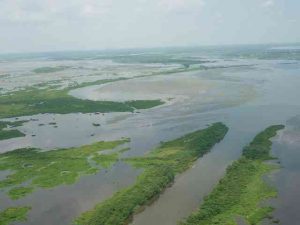
Eustis Engineering provided services for a project to restore the Lake Lery shoreline in St. Bernard and Plaquemines Parishes.
Eustis Engineering will support the State of the Coast conference (Booth No. 922) to be held this week (May 30 - June 1) at the Ernest N. Morial Convention Center. The conference, expected to draw more than 1,000, is hosted by the Coalition to Restore Coastal Louisiana (CRCL), a nonprofit statewide organization aiming to rebuild Louisiana's coast. CRCL advocates for strong coastal policies and implements restoration projects across coastal Louisiana.
The State of the Coast conference is important to us, as Eustis Engineering's staff lives along the Gulf Coast. We have extensive experience in a wide range of projects concerning Louisiana's coast. These projects include coastal protection (e.g., levees, floodwalls, and gates), marsh creation, sediment diversion systems, and vegetative ridges. We also provide services for projects involving shoreline protection, island restoration, bulkheads, weirs, roads, bridges, docks, and drainage structures.
We are experienced in working in marsh and riverine areas, evaluating disposal sites, and designing retention dikes and weirs necessary for the containment of dredged materials.
In early 2000, Eustis Engineering became one of the first firms in the Southeastern United States to perform settling column tests. In the nearly two decades since we expanded our capabilities, our laboratory personnel have become experts in this arena.
Eustis Engineering is currently providing geotechnical design services for the Mid-Barataria Sediment Diversion (MBSD) project near Myrtle Grove in Plaquemines Parish. Engineering, geotechnical, surveying, and other technical services are included in the Coastal Protection and Restoration Authority’s (CPRA’s) $1.3 billion project.
Eustis Engineering is one of the key subcontractors to AECOM, the prime consultants for the land-building project.
Because the Barataria basin has experienced significant land loss, MBSD has become a critical land-building project, and a key piece of CPRA's 2017 Coastal Master Plan. The land loss is due to sediment deprivation, alterations to the area’s natural hydrology, subsidence, sea level rise, and salt water intrusion. Unless action is taken, the land loss will continue.
